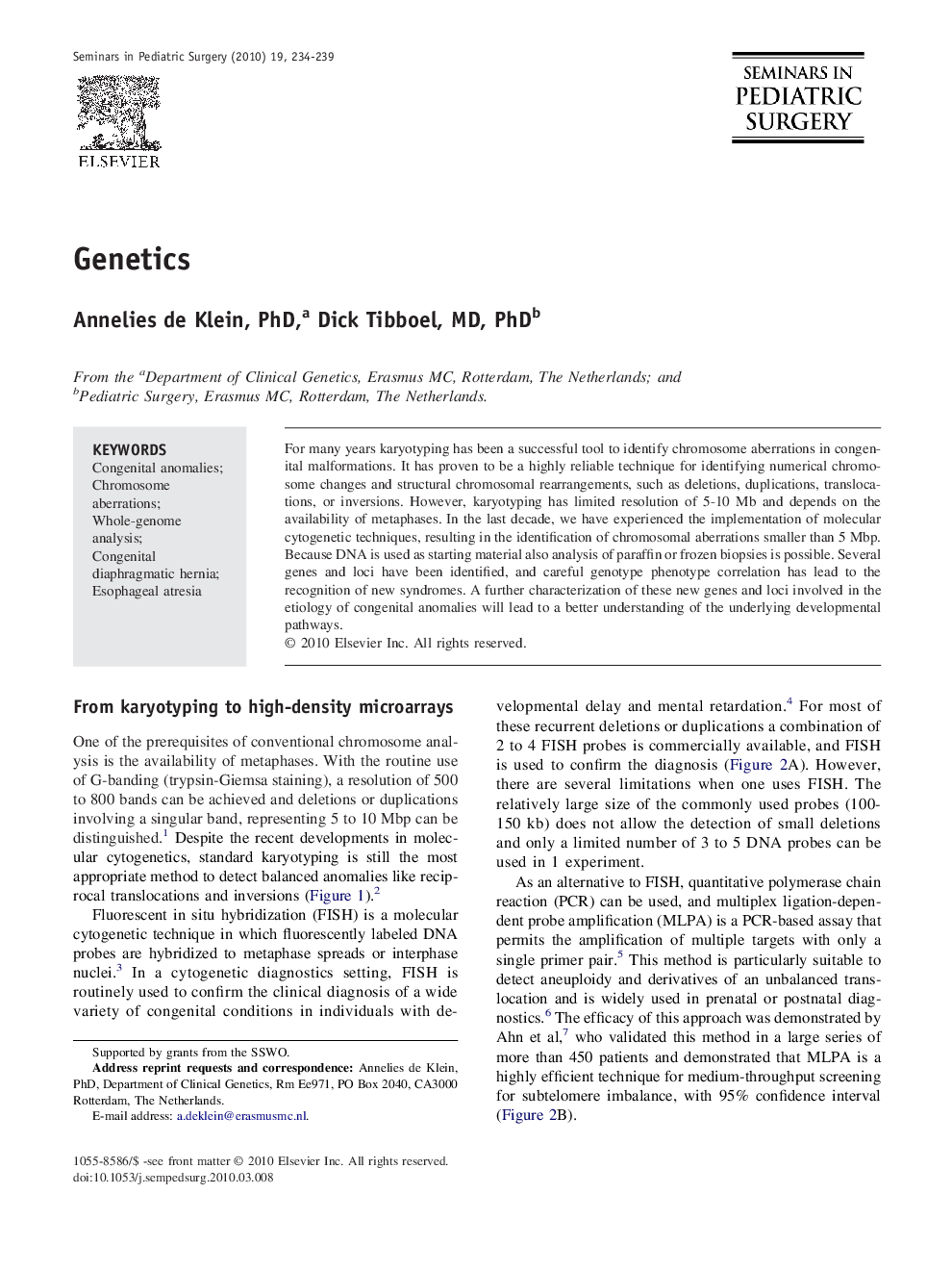| Article ID | Journal | Published Year | Pages | File Type |
|---|---|---|---|---|
| 4176873 | Seminars in Pediatric Surgery | 2010 | 6 Pages |
For many years karyotyping has been a successful tool to identify chromosome aberrations in congenital malformations. It has proven to be a highly reliable technique for identifying numerical chromosome changes and structural chromosomal rearrangements, such as deletions, duplications, translocations, or inversions. However, karyotyping has limited resolution of 5-10 Mb and depends on the availability of metaphases. In the last decade, we have experienced the implementation of molecular cytogenetic techniques, resulting in the identification of chromosomal aberrations smaller than 5 Mbp. Because DNA is used as starting material also analysis of paraffin or frozen biopsies is possible. Several genes and loci have been identified, and careful genotype phenotype correlation has lead to the recognition of new syndromes. A further characterization of these new genes and loci involved in the etiology of congenital anomalies will lead to a better understanding of the underlying developmental pathways.
